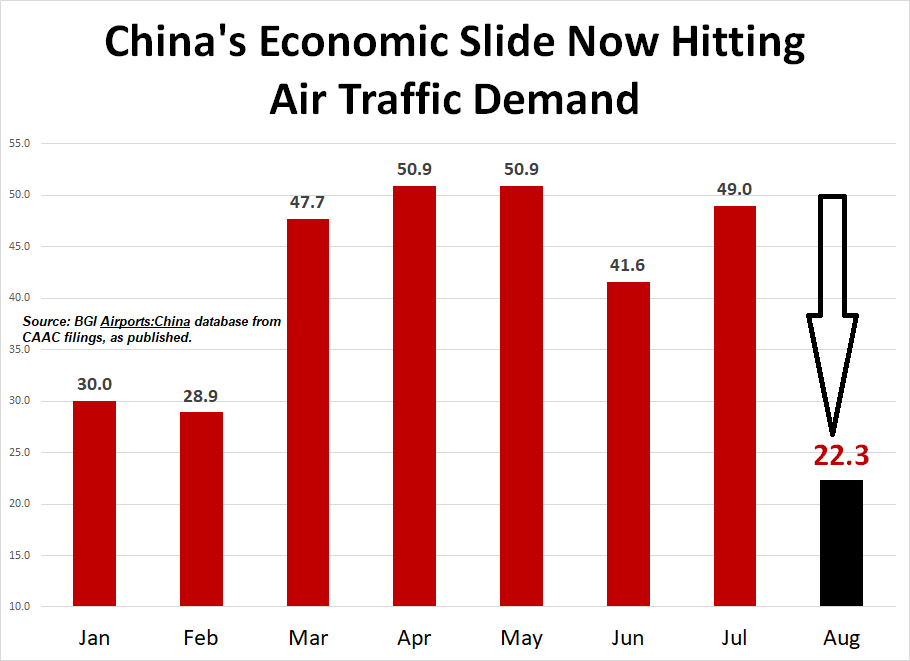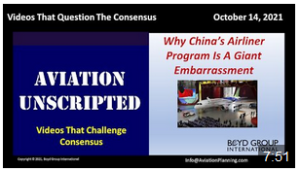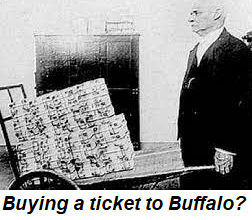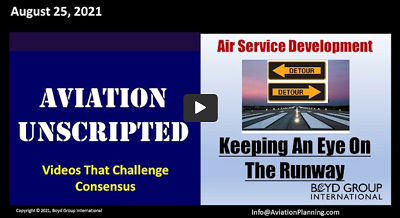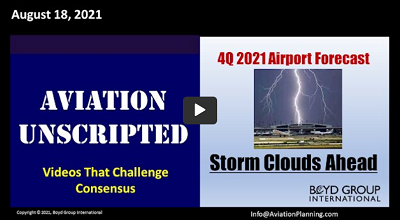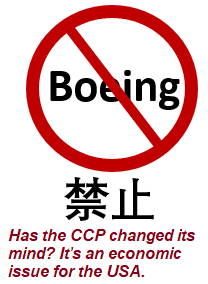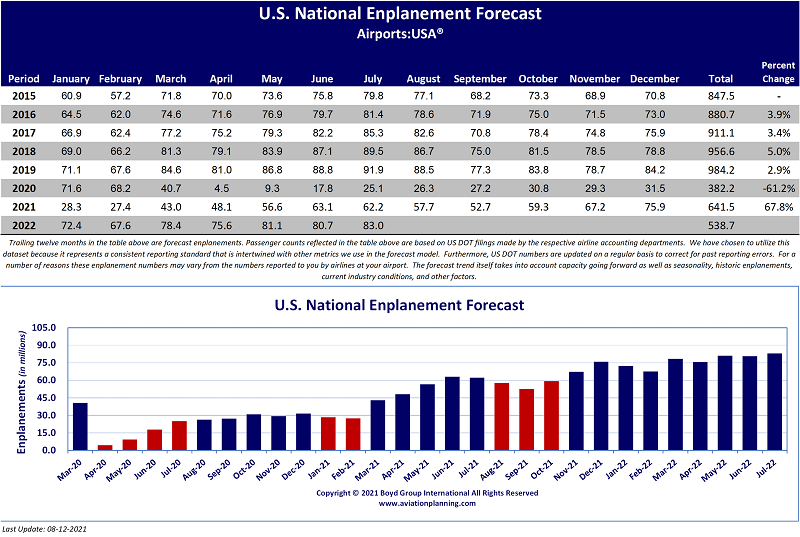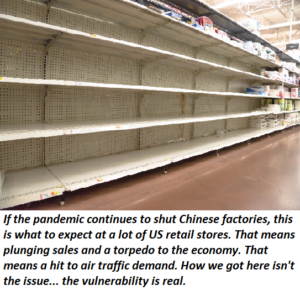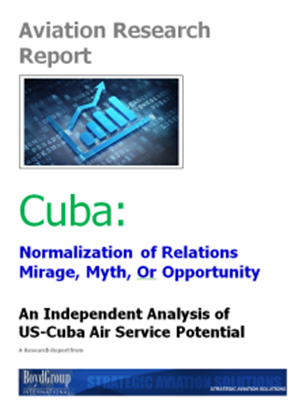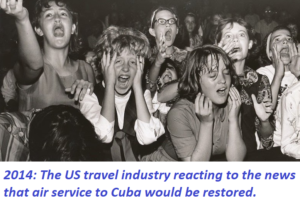DOT United Fine –
A Wake-Up Call For The Airline Industry
The lines are drawn, at least at the DOT.
It would be best that the U.S. airline industry fully get the message… they’re an easy target for politicians to use to appear as consumer commandos, coming to the aid of abused and beleaguered passengers across the nation.
It’s started. Airlines need to re-think all of their customer service “rules” to eliminate consumer confusion, and any even vague image of making passengers tow the line. Get real, they are there, and get real, the new DOT is fixin’ to make a media circus, wherever they can.
Find Something – Anything – And Do The Press Release. The DOT has fined United Airlines almost two million dollars for violating the sacred “tarmac rule” – digging back as far as five years to find 25 incidents where the airline supposedly trapped passengers against their will inside airplane cabins for more than three hours.
Now, the DOT will not make clear that the majority of these ghastly attacks on humankind were the unavoidable results of weather – such as when a snowstorm caused safety diversions from Chicago to alternative airports such as Madison.
In such cases, the DOT still will tell the great unwashed consumers that in such cases the airline must – must – allow passengers off flights if the delay is over 3 hours and provide snacks at some point in the delay.
Reality and any basic knowledge of airline safety need not apply. That would interfere with a great opportunity for political grandstanding.
Write The Story, But Don’t Question The DOT. Not one media story on this – not one – bothered to outline that in such cases, it is safety that takes priority, and when 20 airplanes or more have no alternative but to descend on a secondary airport when a major hubsite like ORD gets weathered in, it can be impossible to get passengers off planes safely in the three-hour period.
There often aren’t gates to deplane passengers, which could be literally several hundred passengers or more.
There isn’t ground equipment to bus folks off the flights. There aren’t terminal facilities to accommodate the throngs of diverted passengers. Sometimes, there are sterile area and security issues, and no TSA on duty. The concession services at diversion airports are not in existence to provide DOT-mandated “snacks.” In some cases, the airline might not even have customer service employees at the airport involved.
These are not screw-ups. They are part of the realities of air transportation. The bottom line is that due to the intrinsic nature of airline service, these incidents will occur. They are not, as the DOT and a lot of media lightweights will represent, avoidable in all cases.
Grandstand First. Facts, Later – Or Not At All. The political appointees at the top of the DOT don’t care… they’re all about making sure they’re playing the willing media to prove they’re not going to let airlines abuse passengers. Even when they have to concoct things.
Message To Airlines: Shift Your Posture. Now, to be clear, there have been incidents where airline performance in the event of diversions has been truly shameful. That is not the norm. But this United fine signals a situation where the U.S. airline industry had better re-think all of their rules and policies concerning customer service.
It’s going to be open season on airlines in the next three years, and carriers need now to look at all of their sacred rules from the perspective of how the consumer might see them, and how they are administered and enforced. Too often, the “rules” are imparted as if directly from Gestapo headquarters. Or from far-away call centers in Asia where the person at the other end of the line couldn’t give a yak meat snack if the customer is satisfied or not.
Let’s not dance around the situation – a lot of airline policies appear or can be construed to appear to be consistent with what one would find at a minimum-security prison and enforced just as gently.
This means there is a need for a complete re-thinking of every consumer policy and a re-imaging of each. It is indeed necessary to have rules that consumers must follow when traveling. But it’s how they are administered, postured and enforced that makes the difference.
With the politicians on the warpath at the DOT, the airline industry had better think about circling the rules wagons to appear more consumer friendly. A couple of points…
Refunds. It can appear that the airline industry considers a booking to be a contractual obligation on the part of the consumer to travel. So, if there are reasons that the airline can’t operate consistent with the initial booking, the consumer is allowed to re-book within a tight set of requirements to fly another day. But in any case, the message is that you have to go, or forfeit your fare. Regardless of protestations to the contrary, that’s the message airlines send to their consumers in the event of major off-schedule situations. It comes across very arrogant and take-it-or-leave-it. Congress and the DOT could have a field day with this one.
Great. But consumers don’t book flights to take an airplane ride. They book to be somewhere on a certain or near certain time frame. Generously telling the customers they have three days to re-book (under a set of rules that can look like the start-up procedure for the space shuttle) does nothing when the airline’s inability to meet the initial booking means the consumer misses the funeral, the wedding, the business meeting, whatever.
Ancillary Fees. With the politicians on the warpath at the DOT, it is beyond belief that any airline would even think about not refunding baggage fees when they fail to deliver the bag with the passenger. It’s even more surprising when one considers how rare such a situation is today. But that’s what the DOT seems to think. Same with internet fees.
“Choice” Or “Prime” Economy Seat Fees. Another emerging cause celebre among the headline seekers in the Marble Playpen (Congress) is airlines that charge extra for specific seats in economy. All these life forms see is that there are situations where for a family to sit together, the airline will gouge them more for a “choice” seat if others are not available together. That “choiceness” might just be described as being closer to the door on arrival. But it’s a “fee” that may look great on the bottom line but for congress is like waving a pot roast at a hungry lion.
Change Fees. It’s likely Southwest is fervently praying that the rest of the industry doesn’t permanently stop charging ticket change fees once this CCP-Covid pandemic is over. That’s because it is likely that WN is getting enormous new revenue from passengers choosing them simply because they know they won’t have to call Zurich for a wire transfer should the need arise to change a reservation.
Please, major carriers, don’t even think about appearing at a congressional hearing and slobber out a lot of financial backroom gobbledy-gook that it really does cost the airline $200 when a passenger changes a booking. It won’t fly and makes airlines look like pirates.
Staffing. This is the biggie. It is a fact that an electronic check-in kiosk is never rude. Never in a bad mood. Never goes on break. Never calls the Teamsters for an organization ballot. Never calls in sick. Live employees are expensive and, in today’s world, are a lot less necessary to passenger processing.
Until the flight cancels.
Or worse, until the destination airport shuts down. Or the entire airport is hit with a blizzard, or just a major thunderstorm. I.e., things that do happen in the airline business.
This is when access to a human is essential. Yup, the wondrous rebooking system takes care of a lot of it, but there are still enough passengers with questions or concerns to make the airport look like a re-enactment of the Fall of Saigon when there is almost nobody to speak with. So call the airline, right?
In the last six months, there have been incidents where the wait time on the telephone can be several hours… hours. And finally at the other end is a contract agent in some remote country who could not care if you flew the airline or took Greyhound.
This is a challenge that events in the past three months have illuminated, big time. There is no easy solution, except training in interpersonal interaction under stress, the ability for front line staff to adjust rules, and refocus on assuring that channels of information are widened in such events. Easy to say, hard to implement… but recent events would indicate service shortfalls that the DOT will leap on.
Final Point: This is not a drill… airlines can either now take this aggressively in hand and make major changes in areas such as noted above, or they will be imposed by an unqualified set of political appointees at the DOT.
________________
Aviation Unscripted – A Review of 9/11 20-Year Coverage
This week’s Aviation Unscripted video looks beyond the events on that day, and the actions America took in reaction both then and since.
Amid all of the articles lauding how different and how much more secure our airports are, came a story from KCBS in Los Angeles. It noted an unauthorized incursion to the sterile AOA at LAX, and then found that there’s been such breaches at an average of almost one per month over the last six years.
 Somehow, this was deemed to be great security by the head of the LAX police, who claimed that compared to the millions of people through the airport, that’s proof of great security. We covered this in last week’s Touch & Go newsletter for our clients. (If you’d like to be added to the distribution, just send us an email.)
Somehow, this was deemed to be great security by the head of the LAX police, who claimed that compared to the millions of people through the airport, that’s proof of great security. We covered this in last week’s Touch & Go newsletter for our clients. (If you’d like to be added to the distribution, just send us an email.)
Terrorists Are Still In Control. In the video, we illuminate that right from the start, it has been a political process at the Department of Homeland Security and at the TSA. The first head of DHS was a state governor with absolutely no expertise in countering terrorism, let alone implementing programs to make America safer. Bush could have nominated a top orthodontist just as effectively, and given the results, maybe more so.
Now that the anniversary has past, it’s back to forgetting what happened on 9/11. The articles ranged from personal recollections to the usual babble about how well the TSA is doing. Some was disgusting political slop such as done by NPR, which made it all political, without pointing to the politicians responsible. But NPR is “free” – and worth every penny.
In any case, if you have not seen it yet, click here for the Aviation Unscripted video.
_________________
